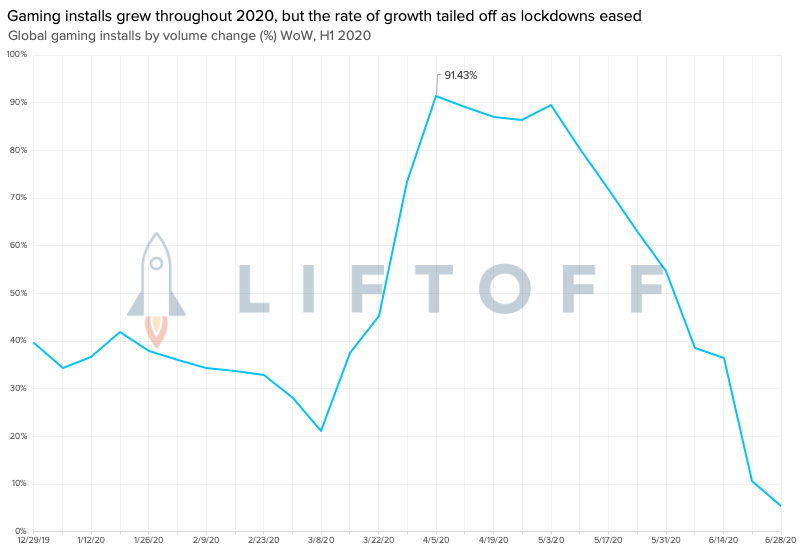
Gaming Apps Hit New Heights During Lockdown
By all measures, gaming has had a great year. In spite of the ongoing challenges faced by marketers during the Coronavirus pandemic (and subsequent lockdown), people are playing more, spending more on in-app purchases, and marketers are investing more money into mobile app advertising.
The stats shouldn’t come as a shock. Users have spent more time shut in than at any other period in history. The resulting boredom of lockdown life has turned mobile users into gamers, with users organically finding and trying out new titles—broadening the demographics beyond the traditional ‘gamer.’ Meanwhile, marketers have benefited from less competition: as other categories slashed their budgets, gaming bought more traffic at a lower cost than usual. Inventory was also boosted with more players than ever before.
Recent Liftoff data correlates to the trends. We tracked the total volume of global gaming app installs from paid sources over the pandemic period, then compared them against the average number of downloads in December 2019 to determine how much app installs had risen throughout the year.

It’s no surprise that app installs have risen. H1 2020 reflected a 50% increase in gaming app installs. By quarter, game installs grew a fair 35.33% in Q1 but ballooned by 62.68% in Q2. And in a single week in April, gaming app installs rose 91.34% above the December average, far above typical download rates.
However, our data indicate that the boom period is over. In June, app installs fell to slightly-above the average rates, contracting by 90% from the last week of May to the last week of June. This behavior should be expected following the easing of global lockdowns but coincided with news that marketers could be facing a post-IDFA world.
To prepare for this new normal, marketers need to be pragmatic. Making use of the data already available from the influx of users in H1 is a wise first step. Gaming marketers should have vast stockpiles of data that they can use to navigate the near-term future. Without users opting-in to mobile advertising, historical data can be utilized to some degree, especially when forming LTV calculations.
Thinking longer-term, marketers should begin to adapt their thinking to broadly targeted retention strategies. Many new players have had ample time to try out titles, and find their favorites. Utilizing personalized data to craft messaging and mechanics now could save a headache or two come September.
Marketers are beginning to understand that they may have to shift focus toward organic engagement. In fact, marketers may need to work harder on fostering community, as well as improving live ops, offering subscriptions, and adding other inventive ways to keep players around beyond typical idle mechanics in order to keep players interest. Whatever the scenario, and the tactics, there is one certainty: you need to prepare for life without the IDFA now, rather than letting user acquisition fall flat.
More gaming insights are on the horizon. Our upcoming Gaming report details the metrics that matter, allowing you to benchmark your performance against the competition. Keep track of our resources page for updates, or sign up to our newsletter in the sidebar to get new releases straight into your inbox.